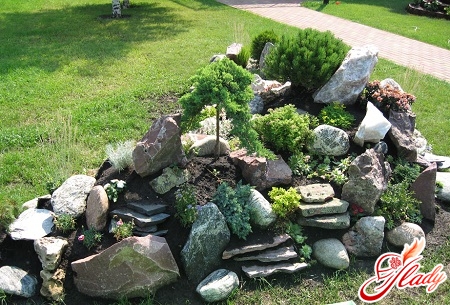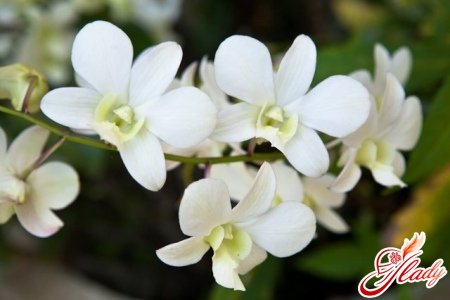 Since landscape design ceased to bethe prerogative of exclusively professionals, our manor and dacha sites have been surprisingly transformed. But here that is remarkable. This transformation does not always happen as we would like. It seems that the vegetable plantations have disappeared, and besides the usual flower beds there appeared new-fashioned alpine hills and rockeries. Ponds and ponds, waterfalls and brooks, paths of all kinds, lawns and sheared fences, but still something is not right. Well, in no way do we pull our design delights on the results of the works of gardeners of the past. So what's the deal? And the thing is that we are not familiar with the styles of landscape design, exactly what any garden makes beautiful and harmonious. A stylistic decision and certain rules of each style - that's what you need to know, waving at the difficult (as it turns out) the case of landscape design.
Since landscape design ceased to bethe prerogative of exclusively professionals, our manor and dacha sites have been surprisingly transformed. But here that is remarkable. This transformation does not always happen as we would like. It seems that the vegetable plantations have disappeared, and besides the usual flower beds there appeared new-fashioned alpine hills and rockeries. Ponds and ponds, waterfalls and brooks, paths of all kinds, lawns and sheared fences, but still something is not right. Well, in no way do we pull our design delights on the results of the works of gardeners of the past. So what's the deal? And the thing is that we are not familiar with the styles of landscape design, exactly what any garden makes beautiful and harmonious. A stylistic decision and certain rules of each style - that's what you need to know, waving at the difficult (as it turns out) the case of landscape design.
Stylistic Solutions
For all known styles of landscape designthere is a generally accepted classification (it sounds, however, somehow scientifically). However, you can try to divide these styles into specific groups. So, for example, depending on the general impression of "naturalness" or "artificiality", the design of any garden can be attributed to a group of regular or landscape styles, closer to a rustic or park style. By ethnic coloring, the design of the garden can be sustained in Western or Eastern traditions, reflect cutting-edge fashion trends or arouse nostalgia for the past. Therefore, the stylistic decision for your garden should reflect exactly your vision of the world and your attitude. Any style you choose will emphasize your perception of the surrounding space and your concept of natural, but man-made beauty. Nevertheless, for everything to turn out to be really stylish, you need to know the so-called "signs" and laws of each style in landscape design. By the way, the mixture of styles here is also quite acceptable and can easily become your stylistic decision. The main thing is that the entire architecture of the garden is subordinated to one idea and organized by a single creative method. And interestingly, whatever stylistic solution for your garden you do not stop, it will always gravitate either to the clarity and mathematical regularity of the regular style or to the meditative mood of the landscape landscape. Because it is these two areas of landscape design that are style-forming. Let's see what are the most famous and common styles of landscape design in landscape art. 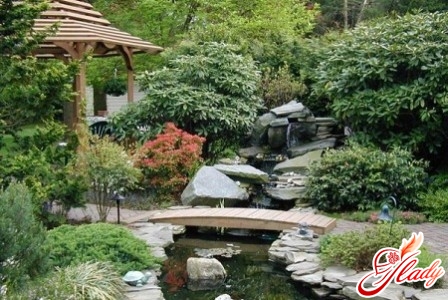
Regular style
It is also called French, classical,formal. This style is well known to you and as a style of European palace parks and gardens (the famous Versailles garden). Its main distinguishing feature is symmetry. All elements of the garden must be symmetrical with respect to the main or given axis, and also have strict geometric shapes. The landscape of the regular garden is not very special. It is all located in the same plane or on terraces with retaining walls. In such a garden, the multi-level terraces are connected by stairs, which become an important decorative element of the garden. Stranded fences, geometrically located paths, a green lawn with flat boundaries are also indispensable signs of a regular garden. Given all these features, and plants for him to choose certain, namely those that are well suited to haircut. It is not always appropriate to use this style for the design of your garden. Still, this style is suitable for large areas and parks. If you have just such a residence intended for receiving guests, holding business meetings and events, and also want to show off your wealth, then choose a classic style. In this case, the impression will be made to you precisely. But keep in mind that you are unlikely to manage on your own, you will certainly need helpers for this stylistic decision. 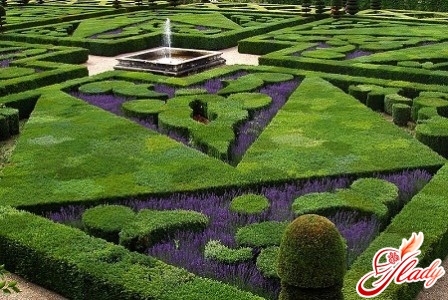
Landscape style
This solution is suitable for those who are mathThe concept of symmetry and geometry in garden design does not accept. Because this style is also called natural. What is characteristic for him? Maximum proximity to the natural landscape: alternation of hills and slopes, smoothness and tortuosity of lines, longline plantings, picturesque ponds. The garden, decorated in a landscape style, should resemble a cultivated and well-groomed corner of the "wild" nature. Therefore, for a landscape garden, plants are selected that grow, as a rule, in this area. The paths make it look like forest and meadow paths, and the uneven banks of water bodies are framed with natural materials (stone, sand) and near-water vegetation. Usually, this stylistic solution is suitable for country houses and suburban areas. This style has to rest and creativity, allows you to get as close to nature and even "dissolve in it", awakening the philosophical mood. This style originated in England and is therefore also known under its second name "English". It is the ancient English estates - a vivid example of the landscape style. And how the Russian gardens of the nineteenth century, decorated in a landscape style, look like in the picture of Vasily Polenov's "Grandmother's Yard." Variations on the theme of regular style
Variations on the theme of the landscape style
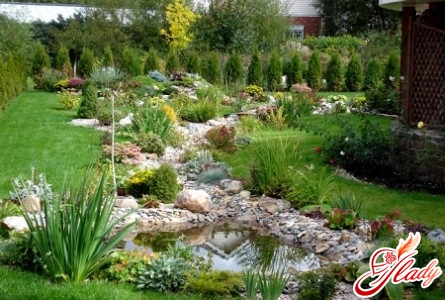
Choose your style
The main stages of choosing a style in landscape design- is the study of the relief of your site and its natural vegetation, as well as the definition of the purpose with which you create your garden. The choice of style also depends on the architecture of your house, the size of the plot, the proximity of the natural reservoir, the presence or absence of any communications or structures. If you own a large suburban site in the forest zone, then it will be most reasonable to choose the forest style. If your cottage is built on a large and open plot, then here, it may be appropriate to have a regular (French) style. Lovers of exact shapes, but the owners of a small garden will suit the Italian style. To summer residents - Dutch, and to owners of manor in countryside - country style or colonial. Consider also your own abilities in caring for the garden. If you have enough time, you can keep an exemplary regular garden in any of its options. If you do not have much time, then it's best to choose some kind of landscape style. And you can create a special, individual or thematic style. Today it is no less fashionable than a mixture of styles. The thematic style of landscape design as precisely as possible recreates a certain geographical place or stylizes it in accordance with your fantasies. One of the striking examples of thematic style is the Japanese garden. But what prevents you, pick up certain plants and turn your garden, for example, into a Mediterranean landscape? Or create a fabulous garden of roses, which hit Gerda, when she went in search of Kai? Or stylize it under the possession of a medieval nobleman? What is more comfortable with you? Choose. And if it's difficult to stop at something specific, then modern trends in landscape design will help you solve this problem.
Modern trends in landscape design
Mixing styles. That's what is fashionable and popular today. In general, this is justified from the practical point of view, and from the artistic point of view. Materials for garden design are simply plentiful today, the creative impulses of modern landowners are simply overwhelming, and they found a way out in such a simple solution as a "stylistic mix." But in order for your garden to be truly stylish, use this technique in accordance with the rules.
Remember that in this case, landscape designstyles can be different, but in a moderate amount, opposite, but territorially separated. And it does not matter what you prefer, the mathematical precision of a regular style or the philosophical mood of a landscape. The main thing is that it was really nice and really stylish. Because the style is harmony. And are not we striving for this, trying ourselves as a landscape designer? We advise you to read:




